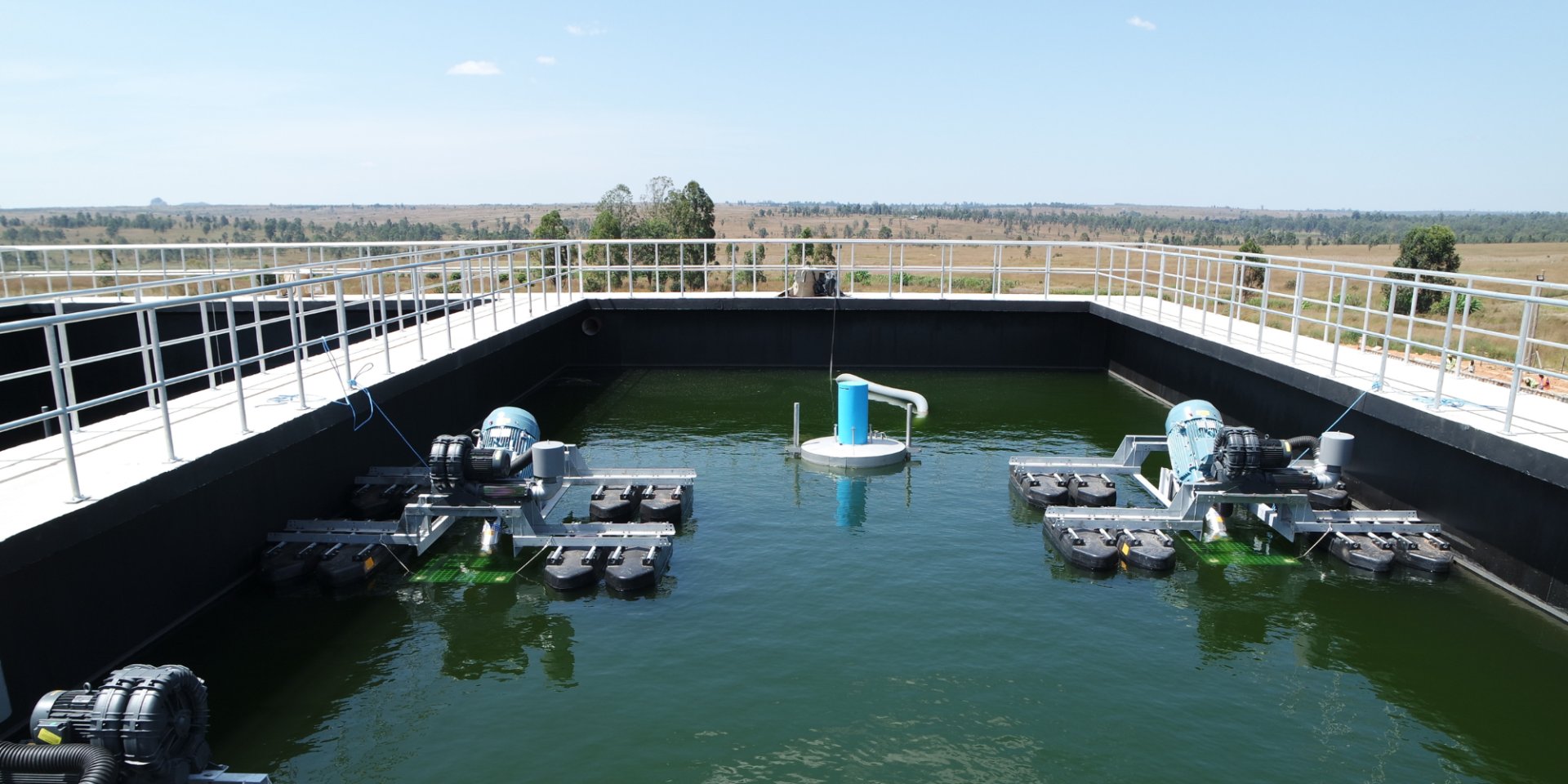This article is taken from the OECD’s Development Co-operation Report 2021: Shaping a Just Digital Transformation. Read the full report
Access to affordable, good-quality Internet is central to development, both to strengthen the growth of businesses and local economies, and to increase access to education, healthcare, banking and government services. But nearly half the global population remains unconnected to the Internet and many more have expensive, low-quality connections. The financing need for digital infrastructure is not being met. An estimated $100 billion investment will be required in Africa alone to achieve universal broadband Internet access by 2030.
At CDC, we have investments of around $700 million in the digital technology sector, supporting over 100 companies across Africa and South Asia. More than two decades ago, our investment supported the growth of Celtel, an African mobile phone company, to 8 million customers in 13 African countries at a time when most thought the concept of mobile phones in Africa would not work. Today, the continent has over 100 mobile phone companies. While commercial investors considered the African market either unimportant or too difficult to navigate, Celtel created a new market with huge development impact.
This experience shows how support by a DFI can unlock investment required but lacking in emerging markets. Over the last five years, stepped-up investment taught us more about the financing needs of digital transformation to enable development. Based on these experiences, this article considers, first, the areas of the digital space that can benefit from DFI involvement and, second, the kinds of finance needed and the range of actors who can provide it.
$700m
of our investment is in the digital technology sector
Segmenting three areas for digital investment
We focus on three areas for investment: digital infrastructure, digitally native and enabled companies, and disruptive digital business. Risk level is a distinguishing factor. It tends to be lower in digital infrastructure investment, and higher for businesses using digital technology. But there are nuances within this framework. Infrastructure and most digital businesses are appropriate for both equity and debt financing. But the experimental nature of disruptive digital businesses makes them typically appropriate only for equity investment. This section offers examples from all three.
Digital infrastructure
Our investment in Liquid Telecom shows how building digital infrastructure catalyses investment from across the private sector.
Liquid Telecom, the largest independent fibre, data-centre and cloud technology provider in Africa, brings broadband to some of the most isolated and unconnected places across the continent. To date, it laid over 100 000 km of fibre network across the African continent. Among the challenges Liquid Telecom faces, are geographic barriers in the countries where it operates. For example, Internet is more expensive in Kinshasa, Democratic Republic of the Congo (DRC), than in neighbouring Brazzaville, Congo, despite them being just 4.8 km apart. This is due to their separation by the Congo River, the second-fastest and deepest in the world, which makes it difficult to cross with fibre cable. Liquid Telecom used innovative optical technology to complete this connection, expected to bring down the cost of broadband access for millions of people.
Our investment accelerated Liquid Telecom’s ambition to connect ‘Cape Town to Cairo’ by fibre network and expand infrastructure into central and western Africa. This includes places like DRC that lack affordable and reliable broadband. In 2020, additional investment supported the company’s plan to expand its pan-African data-centre business, aiming to boost economic activity by reducing costs and offering affordable data storage for companies.
This investment also helps mobilise new sources of capital. Thanks to Liquid Telecom’s successful development, it is the leading African partner for global technology firms, including Microsoft, Google and Facebook. A recent bond refinancing and debt issue raised nearly $800 million for Liquid Telecom at some of the best rates seen in emerging markets.
100,000 km
of fibre network laid by Liquid Telecom across Africa
Digitally native and enabled companies
Investment in digital transformation beyond technological infrastructure helps developing countries accelerate economic growth and connect people to jobs and services.
‘Digitally enabled’ companies use digital technology to make their business more efficient and accessible. This cuts across many sectors, from commerce to logistics, financial inclusion, education and healthcare, among others. In India, Loadshare uses digital technology to bring small- and medium-sized logistics companies together into a nationwide network. That network provides smaller firms with better market access, boosting their growth and creating jobs.
‘Digitally native’ businesses, in contrast, have digital technology at their core; without the Internet, their operations would shut down. iMerit is an artificial intelligence (AI) firm that employs 3 000 people in India and Bhutan. iMerit’s data labelling services train AI algorithms, which are in turn used in everything from medical imaging to flood-risk mitigation. iMerit brings people from marginalised backgrounds into the digital workforce. The average age of employees is only 24, more than half are women, and around 80 per cent come from under-resourced communities.
3,000
iMerit is an artificial intelligence (AI) firm that employs 3,000 people in India and Bhutan.
Disruptive digital businesses
Disruptive businesses use digital technology to directly tackle development challenges, such as improving farmers’ access to finance and climate resilience tools.
Risks from unpredictable weather patterns make climate resilience particularly important in the food and agriculture sector. CropIn, an India-based specialist in software for agribusiness takes a pioneering approach to improving smallholder farmers’ resilience to climate change. CropIn uses technology such as satellite images, AI and machine learning to monitor crop health, generate weather analytics, make yield predictions and pass these insights to farmers. Armed with the right information, farmers can better deal with the effects of climate change. Studies show that climate resilience increases on average for 92% of farmers in the first year of using CropIn’s technology.
Businesses like CropIn are innately high-risk and predominantly founded by entrepreneurs who require external capital to scale up. We invest in CropIn through its Catalyst Strategies portfolio, which takes a risk-tolerant approach in exchange for transformational impact. That flexibility allows us to support new business models with early-stage investment to develop nascent or previously failed markets.
A vibrant entrepreneurial ecosystem in developing markets is critical for generating and scaling innovation solutions to development challenges. We therefore also support the venture investing ecosystem, which often provides the first institutional capital to business founders. That means investing in local venture capital funds and co-investing with these funds into promising early-stage companies.
92%
of farmers report increased climate resilience in the first year of using CropIn’s technology
Impact investors should focus on financing gaps in the digital sector
From large-scale digital infrastructure to early-stage businesses, investment across the digital sector can make a difference in people’s lives by finding digital solutions to intractable development challenges. But a gap in financing the sector makes it crucial for a range of actors to play a role, from institutional investors to multilateral development entities. The scale of the financing gap means that development finance must work in concert with other mechanisms, including impact investment, concessional finance and technical assistance.
Commercial investors prefer well-proven models and established firms. However, developing economies often need new models to address challenges and a lack of infrastructure such as electricity. In east Africa, poa! Internet uses Wi-Fi to provide low-cost broadband and connectivity in low-income neighbourhoods that fibre networks and other technologies cannot reach. While DFIs can play a role in backing new business models like poa!, reluctance from commercial investors means there is a considerable financing gap across most emerging economies.
Impact investors can play a greater role in the larger equity investments needed in digital technology. Impact investors invest to generate measurable social and environmental benefits alongside a financial return and could help to fill this funding gap. But the Global Impact Investing Network (GIIN) estimates that only 3 per cent of impact investments in emerging markets are in the ICT sector. Concessional or grant finance is also important, and can be provided by a range of institutions, including DFIs and philanthropic foundations, to support businesses trialling digital solutions with the potential for significant impact.
3%
of impact investments in emerging markets are in the ICT sector.
Misconceptions hold back investment in infrastructure
Investors assume that digital infrastructure is not as important as sectors like energy and financial services in driving economic development. On the contrary, however, digital infrastructure offers opportunities for high-impact investment. It is a fundamental building block of a modern economy and a proven driver of business growth.
Investors also often believe that digital infrastructure does not need impact capital as it can be fully funded by private capital. But young, independent businesses play a significant role in the sector and need early-stage capital that, in emerging markets, often comes from impact investors.
A final misconception is that impact investors do not usually make the large, equity investments required for digital infrastructure. In reality, digital infrastructure investments have a conservative risk-return profile which is more like traditional infrastructure investment rather than typical growth equity investments.
Concessional finance and technical assistance can lead the way
Concessional or grant finance also can be appropriate in situations that have potential for large social impact but are high risk, unproven and without the likelihood of financial returns that would attract venture capital. Concessional finance or grants play a role across all three areas – digital infrastructure, digitally native and enabled business, and disruptive business – to maximise development impact. Examples include piloting a new digital technology or supporting a traditional business to initiate a digital model and reach previously underserved customers. At CDC, we support these efforts through CDC Plus, our technical assistance arm that identifies and creates impact opportunities beyond the scope of returnable capital.
The COVID-19 pandemic created a particular need for this kind of finance given digitalisation’s even more critical role. For example, in the healthcare sector, digitalisation provides self-diagnostic tools and access to telemedicine necessary when human contact has been restricted. We used technical assistance to support a healthcare company in India to accelerate the roll-out of a platform for remote medical appointments and to launch a new app to assess COVID-19 symptoms.
There is huge potential to make a real difference to people’s lives through investments across the digital spectrum, from large-scale digital infrastructure to early-stage businesses devising digital solutions to intractable development challenges. The size of the financing gap and the different types of financing required makes it crucial for a range of actors to play their parts in financing the sector.











